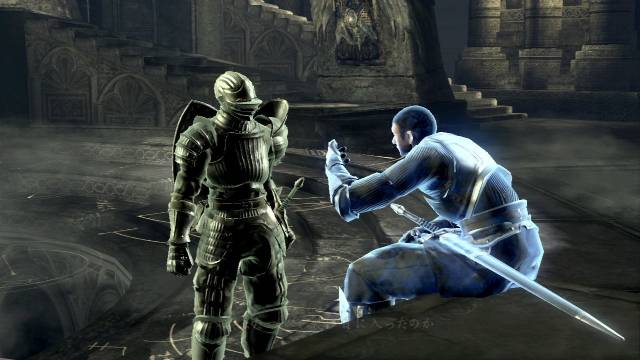Before Lordran, there was Boletaria
Anyone who likes the video game world of recent years has heard of Dark Souls . A cryptic and obscure fantasy odyssey in which to venture and get lost, seduced by the beauty emaciated by daring, labyrinthine architectures. A videogame whose honest but fulfilling difficulty has become proverbial, succeeding in moving from the niche to the general public.
Well, Demon’s Souls it was exactly this two years ago. It is released in Japan in 2009 exclusively for PS3, after a presentation on the controversial Tokyo Game Show last year. With little confidence from those who would first have to support it (including Shuhei Yoshida, president of Sony Worldwide), sales were not enthusiastic. Things went only after the good reception received in Asia, where a first English translation was also distributed. In full “old school”, the game was a good popularity only in word-of-mouth, which gained its entry into the US market, which was back for the occasion. But there was still so much mistrust that publication in Europe came only in 2010, a year and a half after the original Japanese.
Only then,
Everything you’ve learned to love in Dark Souls will find you in this Demon’s Souls. A rational, atmospheric, and middle-of-the-art RPG that can absorb the player but at the same time put him tough on trial as well as more of his “spiritual successors.”
The first step to do this is a more straightforward and straightforward narrative: Allant XII, King of Boletaria, has surrendered to the temptation to awaken the powerful demon known as the Ancient. Unfortunately, it has been overwhelmed, and the reign has ended in a chaos where the grotesque ardish demon servants plunder human souls to nourish it.
When the threat became known outside of Boletaria, many adventurers rushed in search of glory. Our character (customizable thanks to an editor almost the same as the Dark ones) is nothing but one of these. The choice is up to us: to free the kingdom or to be seduced by power.
In fact, as in many other occasions the plot is just a basic premise to enter the player at Boletaria. The land governed by Allant can be described with one word: archetype.
It in fact brings together everything that is overwhelming fantasy, perpetually submerged in gray, foggy and pessimistic tones. Silent but hostile, disastrous but “clean”, its greatest value lies in the fact that it has proposed on PS3 a not-so-good-looking vision of medieval fantasy. Indeed, there is a paradoxical realism in its structures.
The Boletaria Castle still has a unique sense of solidity and topographical accuracy. The same gameplay aims to convey the authentic sense of meanness and “mediocre” heaviness: an incessant lack of any grace, but realistic in a way never seen before in a video game.
The Star Reign
Demon’s Souls’s action-RPG mechanics is what every lover of the Souls knows. A deep but difficult assimilation control system accompanies a balancing cartographic work. From a more general point of view, the game is built according to a “star” structure, whose center is the Nexus . This is the hub of the game, the crossroad without hostility for all the side activities.
You can upgrade weapons, get up and store more items. Around the Nexus, the five macro levels of the game are broken down, divided into a number of zones ranging from three to five. It’s easy to understand how the player’s energy is consumed all over the carnaldungeon-crawling .
The setting ranges from the classic castle to the dark underground tunnels, passing through more atypical ruins to the precipice on the sea. The routes are mostly linear, but they are incredibly “dense”: full of enemies, secrets, shortcuts and traps. If it is obvious that every enemy needs an approach to himself, it is a real risk of losing orientation in the claustrophobic paths, scraping into jail or dying repeatedly on the cliffs.
Achievements that suck away the concentration of the player, in fact forced to give up armor and master the dodge. In perfect conceptual contrast, though, the bossfightI am deliberately simple. Each boss has a weak point easily deducible, often highlighted by some particular grotesque. Delivered but not obscured, their majesty still shows a great epic sense.

